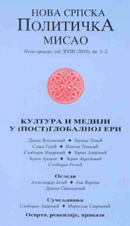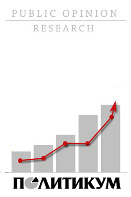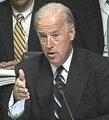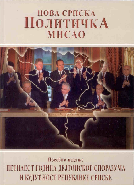| NSPM in English | |||
The Babysitter |
 |
 |
 |
| петак, 23. октобар 2009. | |
|
(The National Interest, 22.10.2009)
Much of the coverage of Vice President Joe Biden’s visit to east-central Europe has concentrated on the “reassurance” role—the promise that the United States has not “abandoned” the region or is preparing to cut some sort of nefarious, Yalta-style deal with Moscow that ratifies a new Russian sphere of influence in the east of Europe. But there is a second, emerging theme which is no less important to recognize. It is the growing expectation that this region, having benefited from the attention lavished on it by the United States (and Western Europe) in the twenty years since the fall of the Berlin wall, must step up to the challenge of being partners of the United States. In his statement after meeting with Polish Prime Minister Donald Tusk, for instance, the vice president opened by noting, “We've moved from a relationship of only being the notion of that we would provide security, which we will, but also moving to the relationship where we work together, we work together and not for, but with one another.” In Romania, Biden stressed that the tenor of his talks with regional leaders is not what Washington can do for central Europe, but “what we can do with central Europe.” Given the ambitious foreign-policy agenda facing the Obama administration—the two wars in the Middle East, coping with the rise of India and China, dealing with contentious trade and climate-change issues—the value of central Europe is less its “strategic real estate” (although still important for protecting Europe from the threat of rogue missile launches from the Middle East) and more in terms of what capabilities can be provided to augment U.S. efforts globally. The vice president paid tribute to Polish and Romanian soldiers already serving in Afghanistan—but it is no secret that Europe as a whole could be doing far more to aid U.S. efforts. And given the increased strains on the U.S. economy, Washington is in no position to unilaterally do the “heavy lifting” of transforming eastern Europe. When one examines trade and investment flows in the former Soviet states, particularly those in the west and south, the lofty rhetoric about “eastern partnerships” doesn’t quite meet the reality of dollars or euros on the ground flowing in from western and central Europe. Nor can the United States be expected to single-handedly solve the region’s problematic dependence on Russia for energy. Diversification of supply and alternate routes will cost money and may result in higher energy prices for regional consumers. But if this is truly a national security issue for these countries, then the burden has to be accepted—it cannot be borne by the United States. So the vice president is sounding all the right notes on this trip—reassurance, partnership, engagement. But he’s also signaling that the relationship of the United States to central Europe is changing, one might even say maturing. And as a result, America feels it can begin to turn its attention to other parts of the world without neglecting friends and allies who, two decades after the end of the Cold War, have “made it.” (Nikolas K. Gvosdev, a senior editor at The National Interest, is a professor of national-security studies at the U.S. Naval War College. The views expressed are entirely his own) |
Остали чланци у рубрици
- Playing With Fire in Ukraine
- Kosovo as a res extra commercium and the alchemy of colonization
- The Balkans XX years after NATO aggression: the case of the Republic of Srpska – past, present and future
- Из архиве - Remarks Before the Foreign Affairs Committee of the European Parliament
- Dysfunction in the Balkans - Can the Post-Yugoslav Settlement Survive?
- Serbia’s latest would-be savior is a modernizer, a strongman - or both
- Why the Ukraine Crisis Is the West’s Fault
- The Ghosts of World War I Circle over Ukraine
- Nato's action plan in Ukraine is right out of Dr Strangelove
- Why Yanukovych Said No to Europe

.jpg)








 Biden is right to remind Eastern Europe that it’s big and strong enough to take care of itself.
Biden is right to remind Eastern Europe that it’s big and strong enough to take care of itself.












